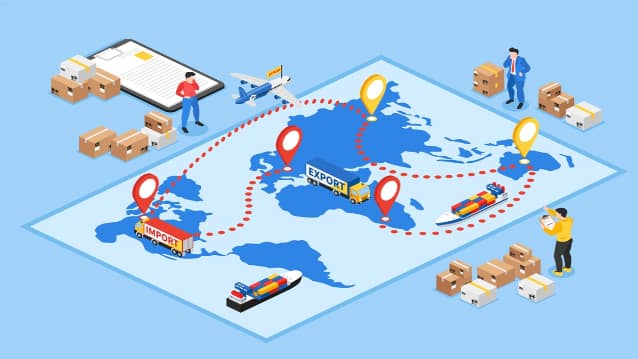In recent years, a series of important trade agreements have transformed India’s export landscape.

Long-term growth depends on reliability of goods and services. (Source: freepik)
As uncertainties loom over the India-US trade pact, India’s exporting small and medium-sized businesses (SMBs) are looking at these developments carefully with eyes wide open. While headlines might focus on the numbers, the real story lies beneath: global trade rules are being rewritten before our eyes. For India’s small and medium enterprises, which already contribute nearly 30 per cent of GDP and sustain more than 110 million jobs, this shift is a cue to strengthen compliance frameworks and future-proof supply chains. It is also a moment to integrate digital finance into day-to-day operations so that cash flows remain resilient across borders. The businesses that act early will be best placed to capture the demand of tomorrow.
A World in Transition and India’s Opportunity
In recent years, a series of important trade agreements have transformed India’s export landscape. The India–UAE Comprehensive Economic Partnership Agreement (CEPA) has taken bilateral trade to USD 84 billion, with non-oil exports leading the surge. The recently signed India-UK Free Trade Agreement (FTA) is set to slash tariffs on 90 percent of traded goods, offering a significant boost to both economies, and aims to double the bilateral trade in goods and services from the existing $ 60 billion to $ 120 billion by 2030. Meanwhile, goods trade with the US hit a record USD 129 billion in 2024 as supply-chain managers diversified away from East Asia.
Also read: E-commerce Sellers to get GST Relief as Council Approves Simplified Registration Scheme
Together, these changes reflect the rise of “friendshoring” and “nearshoring,” where reliability and compliance are replacing simple cost arbitrage. Indian SMBs, digitally born, and increasingly quality-focused, are on the right side of history.
Where Tailwinds Are Strongest
Textiles & Apparel -- Duty-free access to the UAE and UK is opening new opportunities for exporters in this sector. India’s textile and apparel exports, including handicrafts, grew by around 7 per cent during April–October FY24 compared to the same period in FY23. IT & Digital Services. India’s total services exports, led by IT and digital services, reached roughly $325 billion. Even Tier-2 city companies are offering and winning international mandates through remote models.
Agriculture & Handicrafts -- A $7 billion food pipeline to the UAE, combined with booming cross-border marketplaces, is making millet snacks and hand-studded jewellery global bestsellers. Marketplace sales have more than doubled since 2022.
Electronics & Auto Components -- Smartphone shipments surpassed $20 billion in FY25, and the government’s Rs 22,919 crore Production Linked Incentive (PLI) plan for PCBs, sensors, and EV components are strengthening India's position in the global supply chains.
Playing Offence, Not Defence
Future-looking SMBs are already redirecting as much as 20 per cent of next year’s sales targets to rapid-opening markets like the UAE, UK, and Australia, employing Remission of Duties and Taxes on Export Products (RoDTEP) incentives to defray entry costs while localizing catalogues and customer service. Digitization of compliance via the Customs Common Portal, e-invoicing, and real-time tracking of freight reduces paperwork and cuts buffer stock. More importantly, even a modest reduction in the payment cycle can significantly increase working capital velocity, converting cash flow into competitive firepower.
Also read: Talking Tech: How Voice and Vernacular Are Powering India’s Next Digital Wave
Finance: The New Growth Engine
Across borders, it’s rarely product quality that breaks deals; it’s payment friction. Traditional rails are costly, slow, and opaque: hidden FX mark-ups drain margins, fragmented compliance adds uncertainty, and settlements in many corridors still take days. While global standard-setters are pushing for cheaper, faster, more transparent cross-border payments, SMBs don’t have to wait. The practical playbook is to adopt specialist cross-border solutions that offer multi-currency business accounts/virtual IBANs for local collection in USD/EUR/GBP, predictable FX, real-time payment status, and embedded working capital options to keep suppliers paid on time. Shortening the cash-conversion cycle turns liquidity into competitive firepower so geography, legacy rails, and currency risk no longer cap ambition.
Tariff-free access is just a starting point. Long-term growth depends on reliability of goods and services. India's logistics costs stand at 13 percent of GDP, which is about five points higher than in developed economies. To stay competitive, SMBs must adopt digital warehousing, smart route planning, and relevant industry certifications like International Automotive Task Force (IATF) or Zero Discharge of Hazardous Chemicals (ZDHC), adherence to environmental, social and governance (ESG) standards, and on-time delivery. Those who meet these demands will earn repeat business and pricing power that outlasts temporary tariff-related advantages.
From Rebates to Reach: The Full-Stack Approach
The CEPA and ECTA dividends with the UAE and Australia, respectively, the duty-free channels into the UK, and aggressive PLI inducements, indicate a new reality: India is not a price-taker in international trade anymore; it is negotiating on its own terms. But opportunity lost is opportunity foregone. So, SMBs have to look beyond duty rebates and adopt full-stack globalization—digital, financial, and operational. By combining fintech solutions with expanding trade corridors, Indian entrepreneurs can convert geopolitical uncertainty into sustainable global expansion. The map is changing, tariffs regimes are shifting, global business is diversifying. For Indian SMBs, the time to lead is now.
Gaurav Shisodia is Country Manager & Vice-President – India at Payoneer.
Empower your business. Get practical tips, market insights, and growth strategies delivered to your inbox
By continuing you agree to our Privacy Policy & Terms & Conditions
